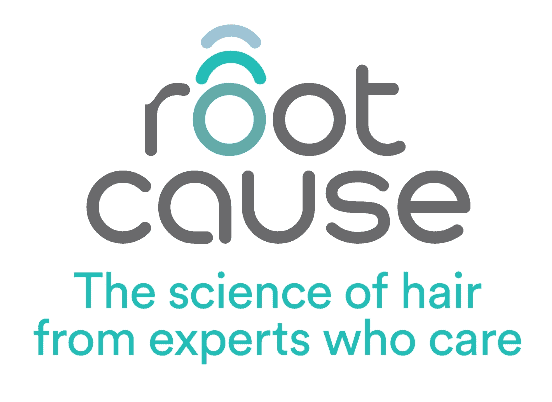TELOGEN EFFLUVIUM
Q: WHAT IS TELOGEN EFFLUVIUM?
Telogen effluvium is the name given for a form of hair thinning that is often reversible and a temporary condition due to an increased release of telogen hairs.
The typical percentage of shedding hairs in a scalp unaffected by Telogen Effluvium would be approximately up to 10%. In a scalp affected by Telogen Effluvium, the number of hairs released can rise to as much as 35% of the total hairs. [1]
This condition usually occurs approximately three months following the onset of a potential trigger, such as childbirth, for example. Telogen Effluvium is classified as acute, lasting up to six months, or chronic, meaning ongoing for longer than six months.
KEY STATS:
No official figures exist, but many people of all ages, sexes, and ethnicities experience Telogen Effluvium. This is because there are many common triggers for the onset.
Infections, for example, are a known trigger for Telogen Effluvium, and there are increasingly more cases related to a Covid infection. In one study, over 24% of patients experienced Telogen Effluvium following a Covid-19 infection.
Q: WHO GETS TELOGEN EFFLUVIUM? HOW DOES IT AFFECT PEOPLE? WHO IS AT MOST RISK?
Telogen effluvium can affect people of all ages or backgrounds. One effect can be accompanied by scalp sensitivity, which has no physical features such as dandruff or inflamed scalp, known as Trichodynia in some cases, but not all.
It occurs more prevalently in women and is usually triggered by a biological disturbance of the hair growth cycle.
Chronic telogen effluvium predominantly affects healthy women in their 30s to 50s, sometimes with no apparent underlying trigger.
Studies have reported TE incidence in children to be around 2.7%.
Q: HOW DO YOU GET TELOGEN EFFLUVIUM? WHAT CAUSES IT?
This condition is one of the most common hair complaints as it has individual or multiple triggers such as iron deficiency/insufficiency, stress, heavy menstrual bleeding, hypo calorific diets/ weight loss, infections, post-partum, haemorrhaging, significant stress and anxiety, certain medications, inflammation/irritation within the scalp.
Q: WHAT ARE THE PRESENTING SYMPTOMS?
Excessive hair shedding occurs approximately three months after the triggering event. This may produce hair thinning over the scalp, commonly in bitemporal recession areas. Scalp scarring and inflammation are not present. The hair pull test is positive for telogen effluvium.
Q: HOW DOES IT AFFECT YOUR HEALTH?
Telogen Effluvium does not affect your health but can be triggered as a side effect of your health. Health issues such as low iron levels, infections, heavy menstrual bleeding, a reaction to certain medications, stress, and rapid weight loss are known triggers for telogen effluvium.
Q: HOW IS IT DIAGNOSED?
Telogen effluvium is diagnosed by excessive hair fall, which has a diffuse (all over) effect on the density of the hair.
The main area affected is the temporal hair lines at the side of the head hair density. A blood test, including full blood count, urine analysis, serum ferritin, vitamin B12 and folate tests, can assist in a diagnosis of Telogen Effluvium.
WHAT IS THE PROGNOSIS?
Telogen effluvium will be rectified once the contributing trigger/triggers are detected and alleviated. This means that unless the underlying cause triggering Telogen Effluvium is rectified, the excessive hair fall will continue. However, this will not lead to balding as a new Anagen (growing) hair will always follow the release of the previous Telogen (shedding) hair.
Q: WHAT TYPES OF TREATMENT IS AVAILABLE?
No specific treatment exists for telogen effluvium. The focus is to identify the specific cause. The treatment will be to seek the cause/trigger and work on that.
For example, if a client was experiencing iron deficiency anaemia triggering Telogen Effluvium, working on improving the iron score and anaemia is the treatment. Stress is a contributing factor to telogen effluvium, so therefore consideration of stress management counselling can be a positive approach as a form of treatment.
JULY 2023
